Unique among French cities in having spent as much of its history within German territory as it has a part of France, Strasbourg is the main population centre in Alsace, eastern France.
Boasting an unusual Franco-German culture as a result, Strasbourg is awash with attractions, from its Gothic cathedral to the glass and steel architecture of the ultra-modern European Quarter.
Charming, beautiful, cultured and vibrant in equal measure, here are the 15 best things to do in Strasbourg.
1. Cathédrale Notre-Dame de Strasbourg
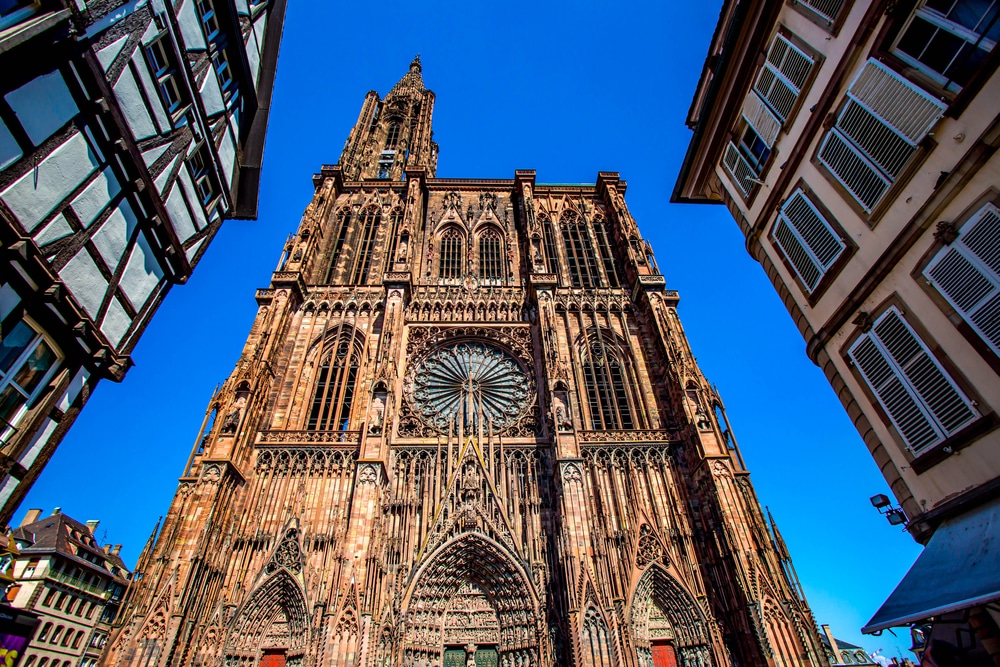 Source: Aeypix / shutterstock
Source: Aeypix / shutterstockStrasbourg’s Cathedral of Our Lady is considered one of the greatest achievements in medieval western architecture.
Begun more than a thousand years ago in 1015, its ornate west façade rises high above its surrounding buildings. Its singular spire peaks at 142 metres high, once making it the tallest structure in the world. It’s a record the cathedral held for more than two hundred years.
By contrast, its Gothic interior is relatively plain, although no less impressive for that, particularly at its southern transept.
Here visitors will discover one of the cathedral’s greatest treasures, its astronomical clock. A structure 18 metres in height, the clock has carved and mechanised puppet-like figures of angels and saints appearing at various different times of day to denote the passing hours.
Website: https://www.cathedrale-strasbourg.fr
2. Museum of Archaeology
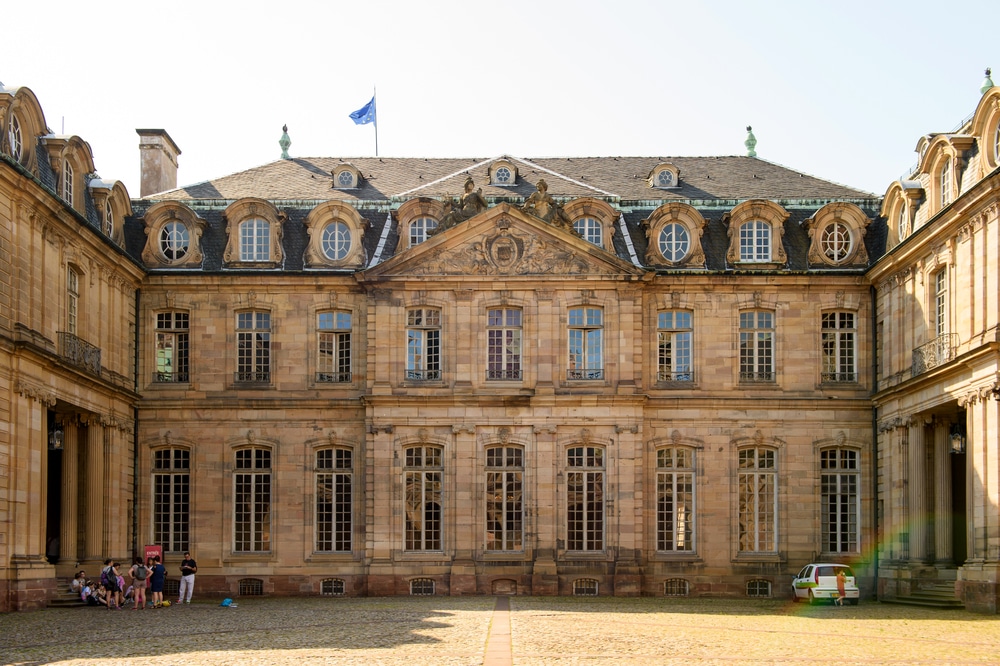 Source: Hadrian / shutterstock
Source: Hadrian / shutterstockWithin sight of the cathedral, the Museum of Archaeology (Musée archéologique) details the ancient history of the Alsace region and the city of Strasbourg from its earliest days through a wide range of exhibits.
A must for anyone interested in these periods, the museum is located in the lower floor of the Palais Rohan. It has a specific focus on the Roman era, when Strasbourg first appears in historic records.
The former primary residence of Strasbourg’s governing bishops, the baroque palace is also the home of the Museum of Decorative Arts on the ground floor, and the Museum of Fine Arts on a further two storeys.
Website: https://en.musees.strasbourg.eu
3. Grande Île
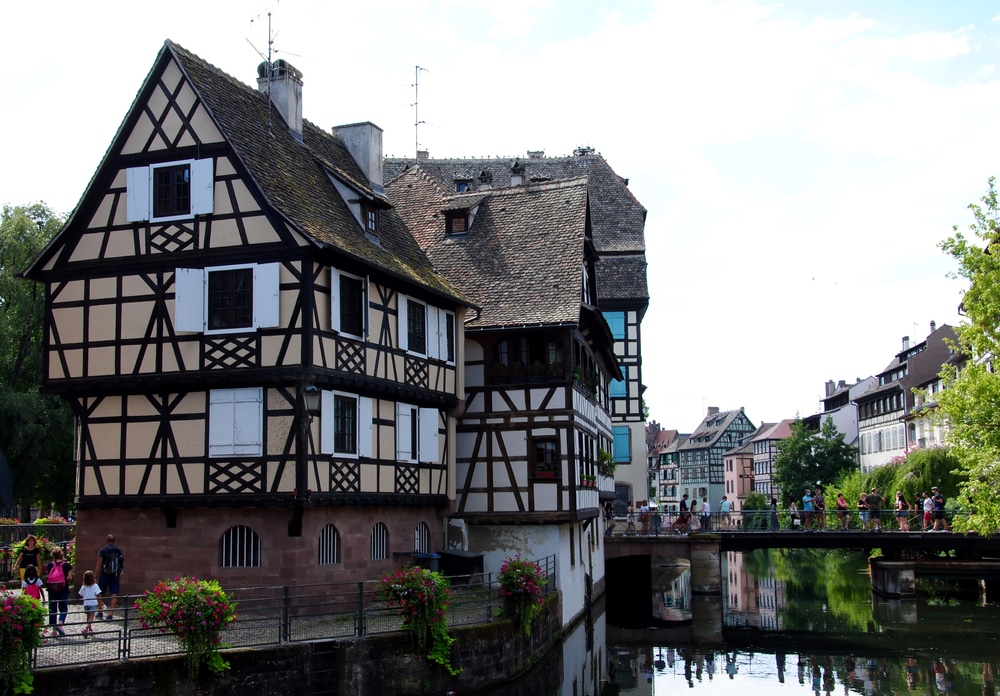 Source: marineke thissen / shutterstock
Source: marineke thissen / shutterstockDominated by the cathedral, the Grande Île is the oldest part of the city. It sits on an island between the River Ill and the Canal du Faux-Rempart.
Dating to medieval times, it has been a UNESCO World Heritage Site since 1988, and is the location of the city’s central square, Place Kléber. This is the site of the eighteenth-century Aubette building and its dance hall decorated in 1920s abstract blocks of colour.
The square also has a large statue of Jean-Baptiste Kléber, a son of Strasbourg at the forefront of the French Revolution, and is where you’ll find the city’s famed Christmas tree come the festive season.
Elsewhere, the Grande Île has a large number of historically important structures, not least its bridges. These include the Ponts Couverts, which still supports medieval towers that helped protect the city from attack for centuries.
4. Parc de l’Orangerie
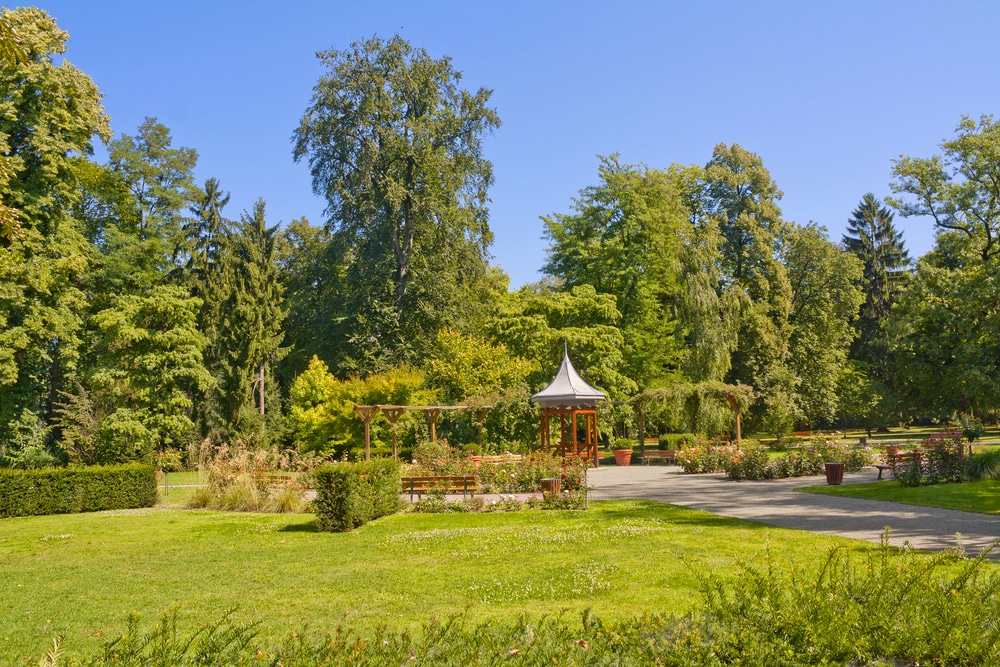 Source: Walencienne / shutterstock
Source: Walencienne / shutterstockStrasbourg’s oldest dedicated green space, the Orangerie remains a favourite place to get outside whatever their age.
Two kilometres north of the Grande Île, the park’s petting zoo and retro car track will keep any children entertained.
Meanwhile, everyone visiting will be impressed by the timber-framed Buerehiesel dating from one of Strasbourg’s German periods of rule, and the Pavillon Joséphine with its rotating series of exhibitions.
A symbol of Alsace, Parc de l’Orangerie is also the place to catch a confirmed sighting of a stork, who clap their beaks together loudly in large nests of twigs right though the year.
5. Alsace wine route
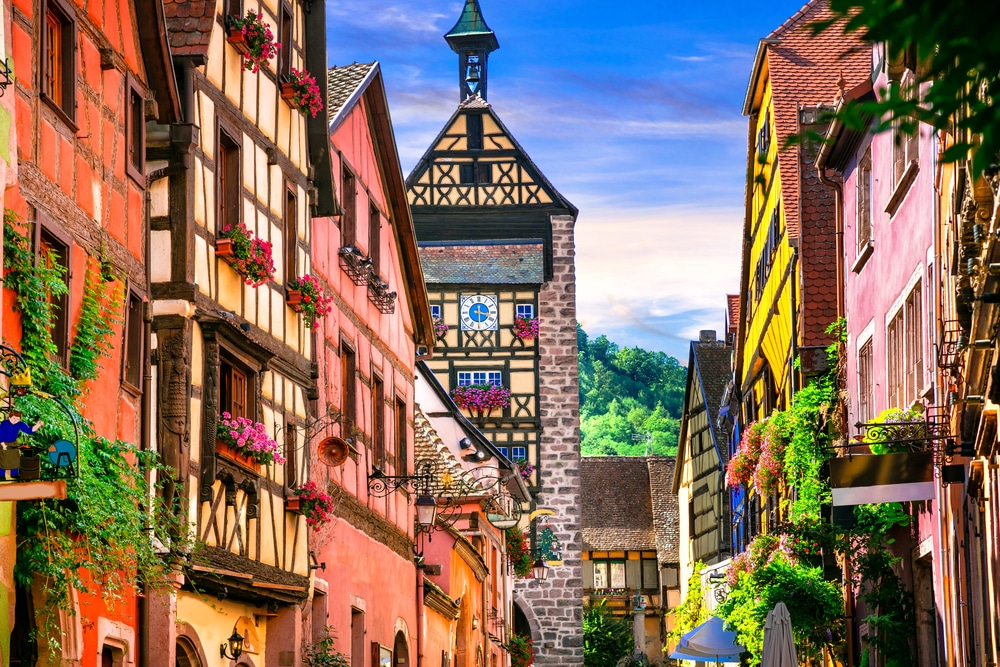 Source: leoks / shutterstock
Source: leoks / shutterstockJust 20 minutes from Strasbourg, the northern end of the Alsace wine route begins at Marlenheim. It then runs roughly south through the best of charming Alsatian scenery for a total of 170 kilometres to Thann.
Passing through the most picturesque landscapes and villages that the region has to offer, including Riquewihr and Kayserberg, the route is also full of historic sites.
But the star of the route has to be the region’s wines, all seven varieties of which can be explored in the vineyards and wine cellars that line the route.
Whether you complete the entire route, or make just a day of it, there are almost endless possibilities.
Website: https://www.wineroute.alsace
6. Petite France
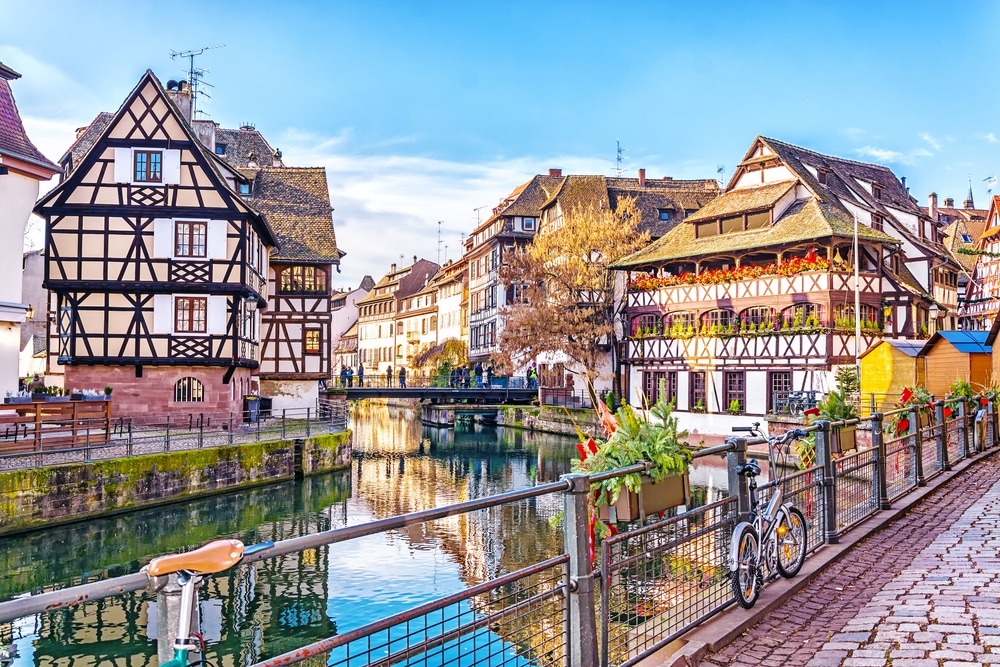 Source: MarinaD_37 / shutterstock
Source: MarinaD_37 / shutterstockThe ‘Little France’ area of Strasbourg is one of attractive canals lined by black and white timber-framed buildings dating back six centuries.
Also known as the Quartier des Tanneurs, or Leather Tanner’s Quarter, Petite France is riddled with atmospheric alleyways linked by footbridges that congregate at Place Benjamin-Zix and the Maison des Tanneurs, the guild house for the former industry.
Petite France is also the location of the Barrage Vauban, a further defensive feature opened in 1690 that today doubles as an art gallery and viewing terrace, with panoramas stretching back towards the historic area.
7. Museum of Fine Arts
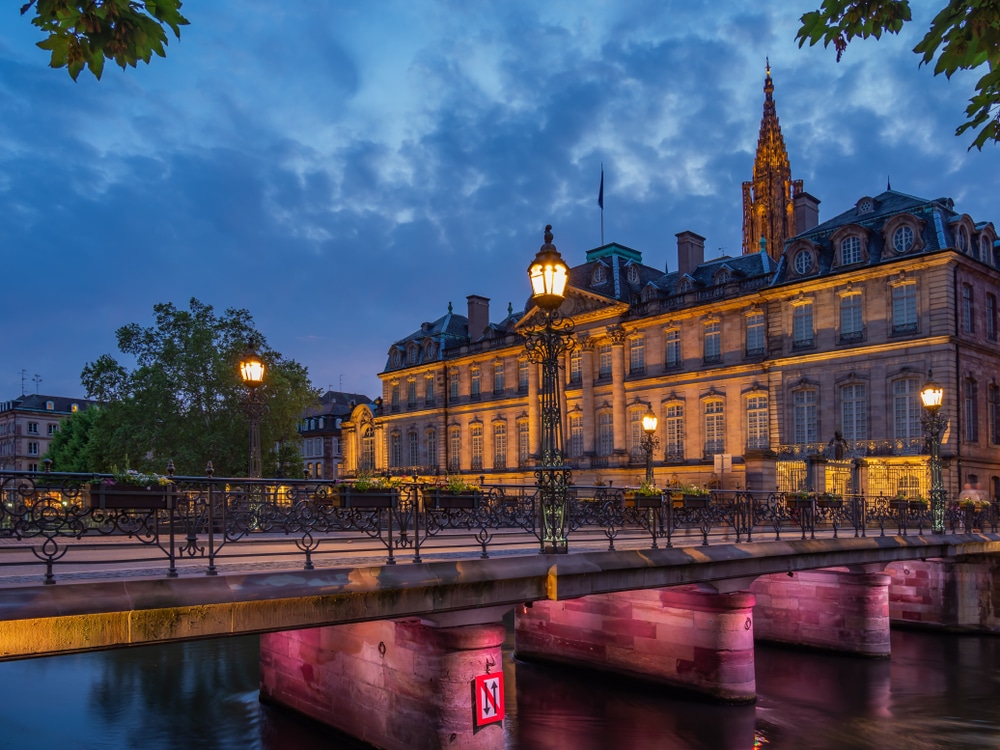 Source: Netfalls Remy Musser / shutterstock
Source: Netfalls Remy Musser / shutterstockSituated within the Palais Rohan along with the Museum of Archaeology, the Museum of Fine Arts has an impressive collection of Old Masters.
Based on a group of artworks brought together in 1801 in part from the collections of the Louvre, today its walls are hung with examples by Goya, Tintoretto, Botticelli, Rubens, and El Greco among others. This is doubly surprising since the museum has been hit by several devastating fires, the first of which was in 1870 and the last in 1947.
In addition to this permanent collection, the museum hosts a series of temporary exhibits throughout the year.
Website: https://en.musees.strasbourg.eu/museums
8. Tarte flambée
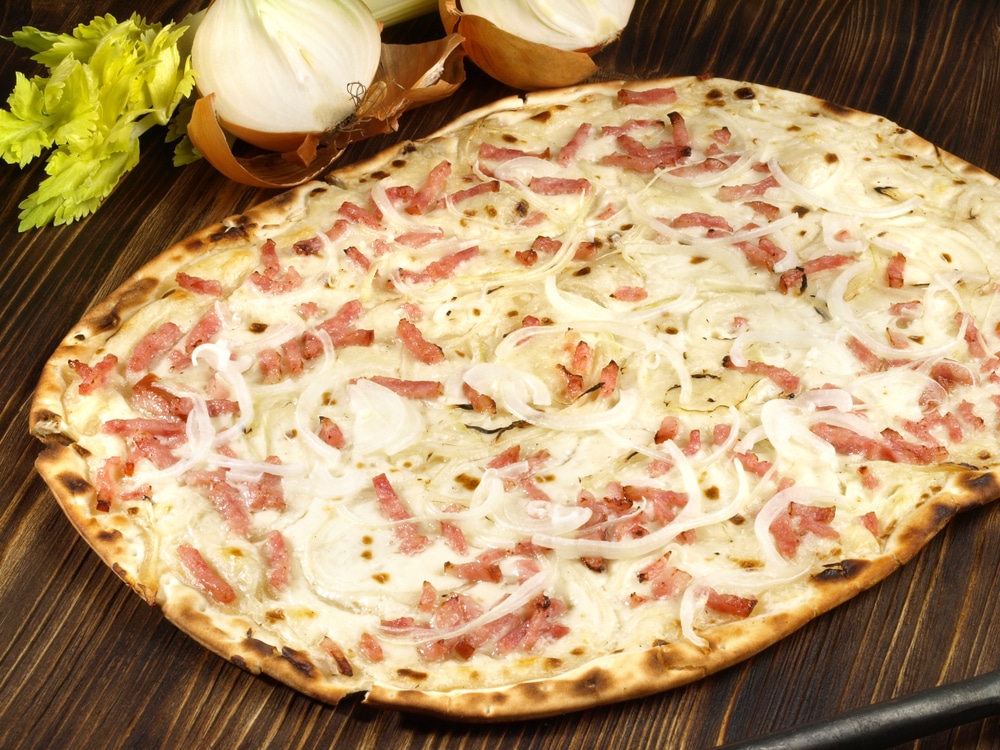 Source: Food Impressions / shutterstock
Source: Food Impressions / shutterstockFor a taste of the Alsace region’s distinctive style, look no further than the tarte flambée or flammkuchen.
Found on café and restaurant menus throughout Strasbourg, the tarte flambée is one of the area’s best-known traditional foods.
Best compared to a pizza, the ‘tart’ is made out of a bread dough rolled out to just a couple of millimetres in depth. This is topped with fromage blanc rather than tomato puree, and topped at its most authentic with slices on onion and bacon lardons.
They are cooked in wood-fired ovens, and can also be enjoyed on the street as a snack.
9. Canal cruise
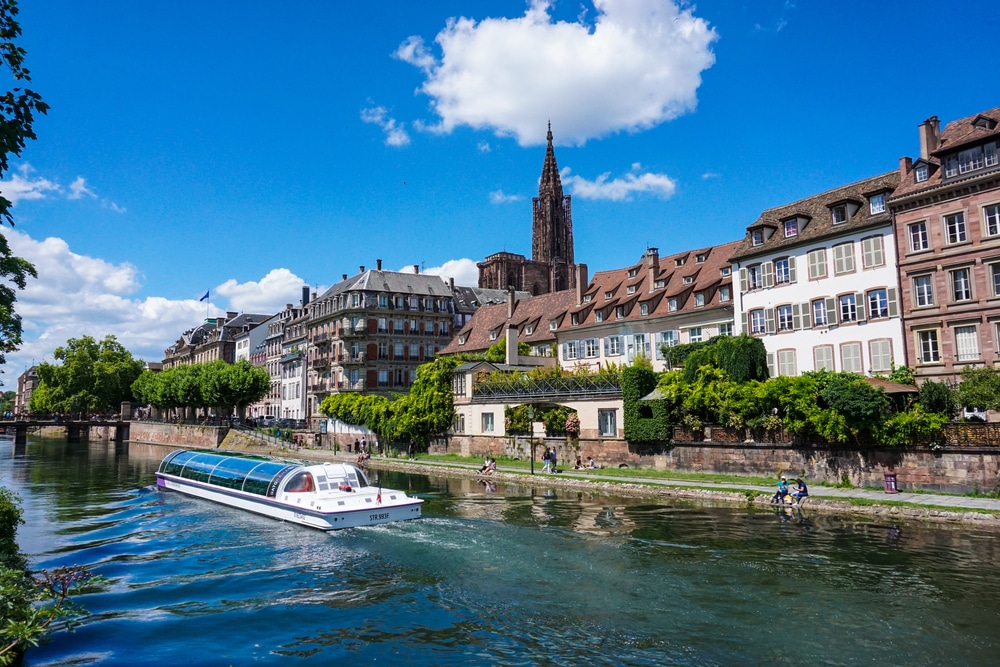 Source: Lia Seisdici / shutterstock
Source: Lia Seisdici / shutterstockFor an alternative way to explore the buildings of Petite France, there’s nothing quite like a canal and river sightseeing cruise.
Navigating central locks and slipping beneath attractive ancient bridges, the rivers and canals around which Strasbourg has been built make them an excellent way of taking in all the city’s main sights (and many hidden ones) in a single tour.
Focussed around the Grande Île, most tours include automated commentary, while some also include lunch.
Website: https://www.batorama.com/
10. European Quarter
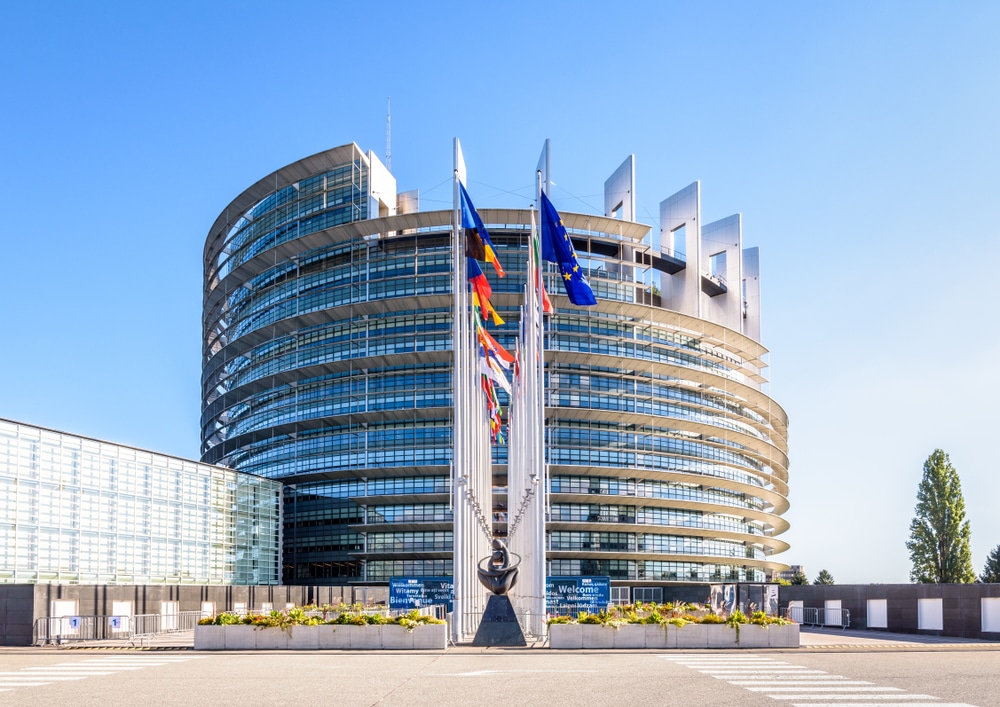 Source: olrat / shutterstock
Source: olrat / shutterstockFloat north along the River Ill beyond Petite France and Grande Île and you’ll soon reach Strasbourg’s European Quarter.
Home to various institutions belonging to the European Union, including an outpost of the European Parliament and Palace of Europe, the quarter is the city at its most modern and contemporary.
Impressive walls of curved glass appear out of parkland on the riverbank, designed by modern-day luminaries including British architect Richard Rogers. You can normally head inside many of the buildings for a closer look too.
11. Neustadt
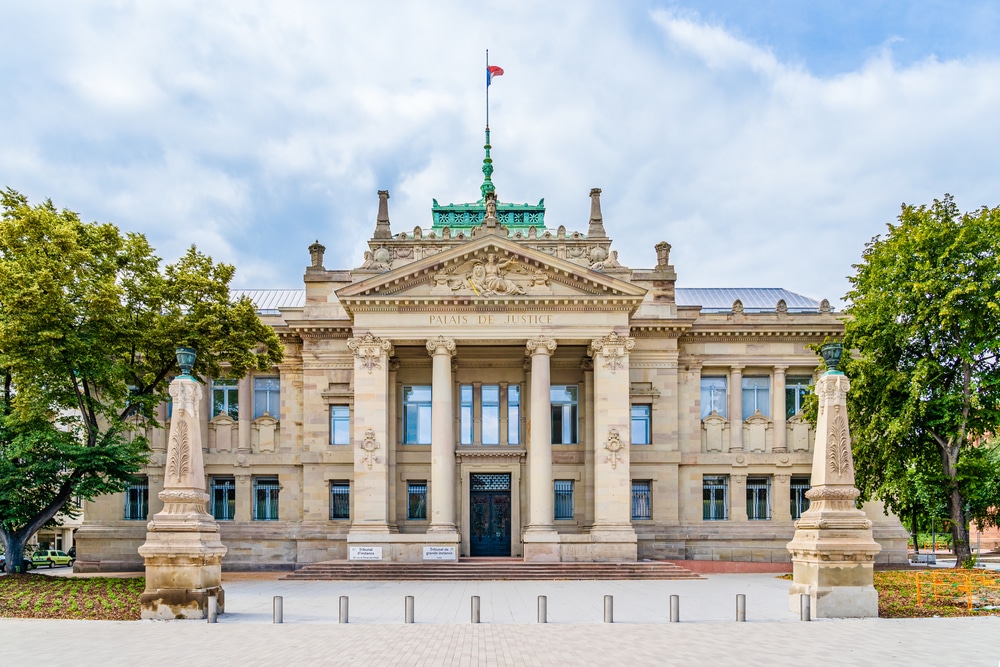 Source: PhotoFires / shutterstock
Source: PhotoFires / shutterstockThe Neustadt district of Strasbourg is yet another contrasting neighbour within the city.
With its name coming from the German for New Town, Neustadt dates its foundation to a period of German rule between 1871 and 1918. It was created to act as the new centre of the city, and is also known by the alternative name of the German Imperial district.
Comprising wide avenues and a neat gridiron of streets, the area was included in the city’s Grande Île World Heritage Site status in 2017 due to its impressive architecture and arte nouveau buildings.
Some of the best examples can be found around Boulevard de la Victoire and Rue Sellénick, with further grand structures such as the National and University Library on Place de la République.
12. Black Forest
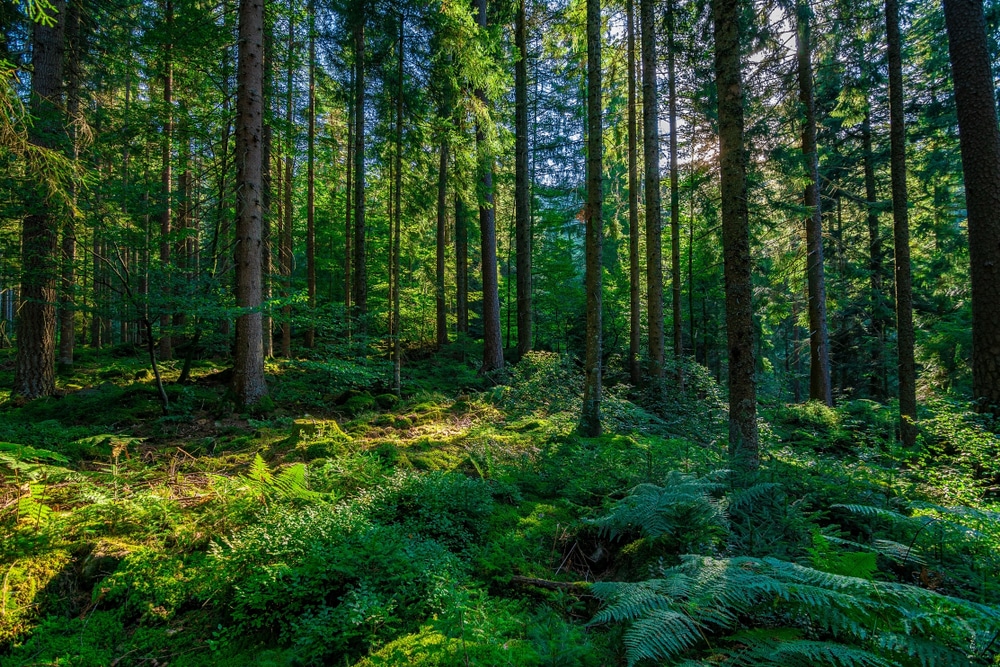 Source: Arthur Palmer / shutterstock
Source: Arthur Palmer / shutterstockOnly 25 kilometres east of Strasbourg across the open border with Germany, the Black Forest is a wonderland of mountainous footpaths and mountain bike trails winding through dense woodland to otherwise hidden villages.
So close that Strasbourg’s Notre-Dame cathedral spire can be seen on a fine day, the Black Forest region is known for its intricate carving, including of cuckoo clocks, spa towns, and the gateau that takes its name.
Its lakes offer water sports, including windsurfing, while its mountains are used as a launch site for hang gliding and paragliding.
Website: https://www.nationalpark-schwarzwald.de/
13. Botanical Gardens
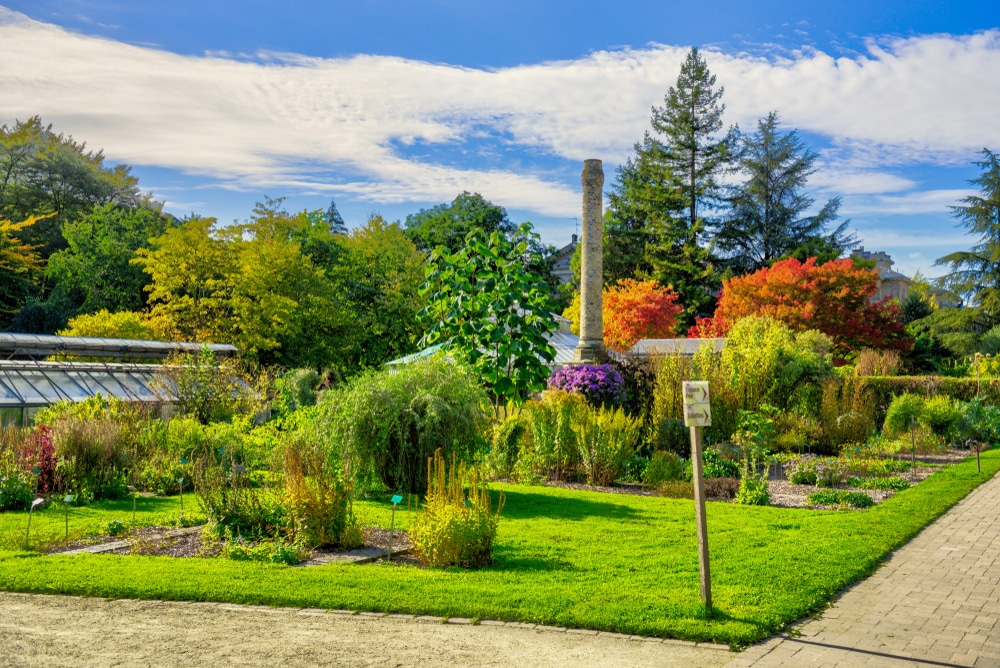 Source: Belyay / shutterstock
Source: Belyay / shutterstockAnother brilliant excuse to explore Strasbourg’s Neustadt district, the staff at the city’s Botanical Gardens look after an astonishing 6,000 different species of plant split between the grounds, arboretum, and mid-twentieth century greenhouses.
The collection includes some rare plants for the region, including a giant redwood from North America, which as a species hold the record for the tallest trees on the planet.
Belonging to the University of Strasbourg, the 3.5 hectare gardens date back to 1619, and has a timeless feel as a result of its mature planting and delightful paths.
Website: http://jardin-botanique.unistra.fr
14. Museum of Modern and Contemporary Art
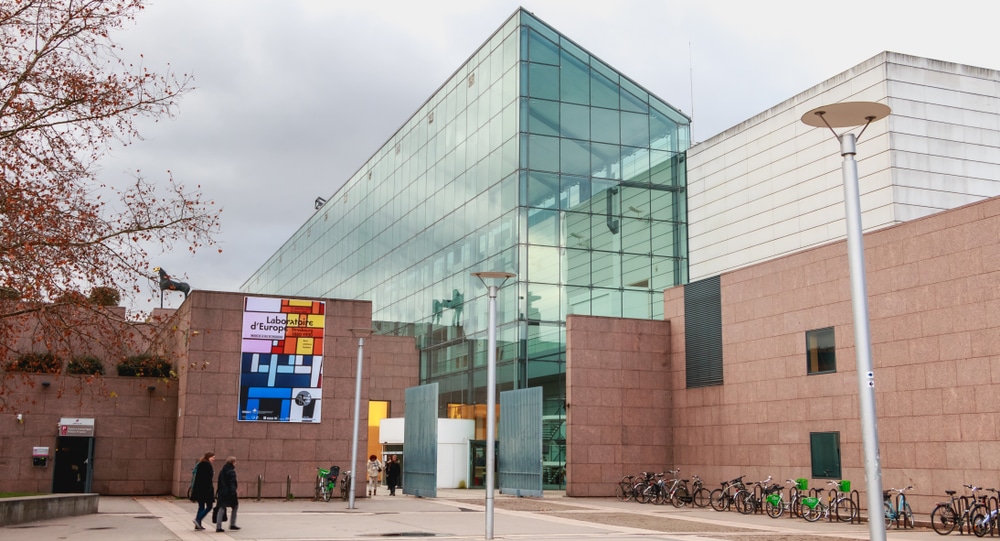 Source: Pierre-Olivier / shutterstock
Source: Pierre-Olivier / shutterstockWhile making much of its long history and attractive historic structures, the modern side of Strasbourg shouldn’t be forgotten.
For a dose of the contemporary, there’s no better place to head than the Museum of Modern and Contemporary Art (MAMCS).
The innovative structure made up of clear glass panels is home to works by Monet, Picasso, and Brauner.
If the weather holds, there’s also a nice café with a panoramic terrace in which to soak up more of the city’s mesmerising views.
Website: https://en.musees.strasbourg.eu
15. Place du Marché-aux-Cochons-de-Lait
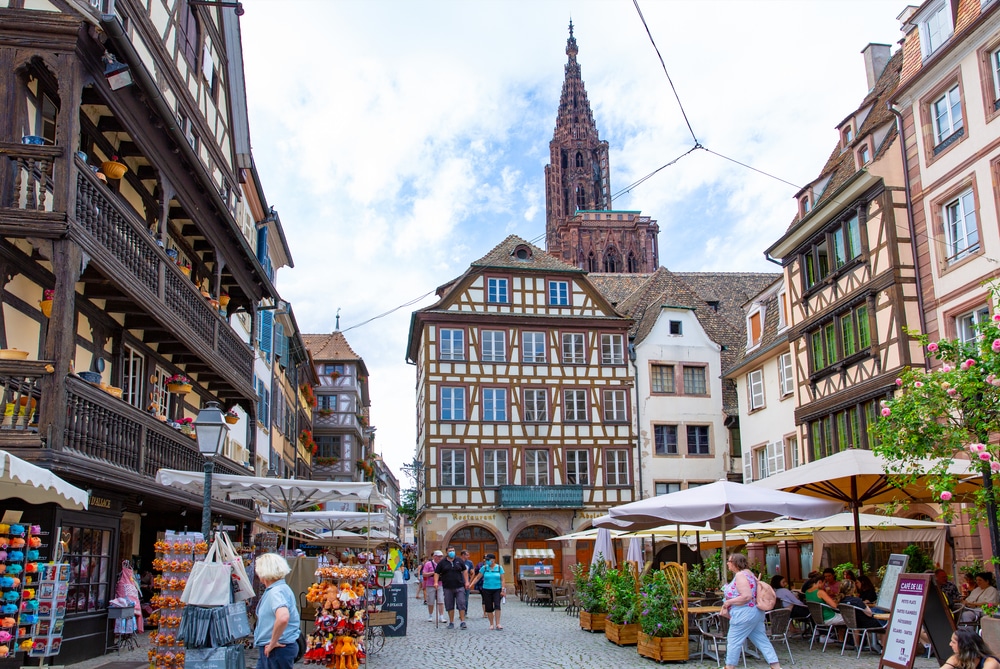 Source: Traveller70 / shutterstock
Source: Traveller70 / shutterstockNot only does this square have a great name, but it also has a great setting.
Translating to Suckling Pig Market, the square was for many decades the centre of the city’s meat trade, specialising in sucking pig.
It’s mix of architecture and cobblestone appearance makes it’s a wonderful place to stop for a drink or a bite to eat while watching the residents of the city go about their everyday lives.
Alternatively, why not pop into one of the small temping storefronts instead?